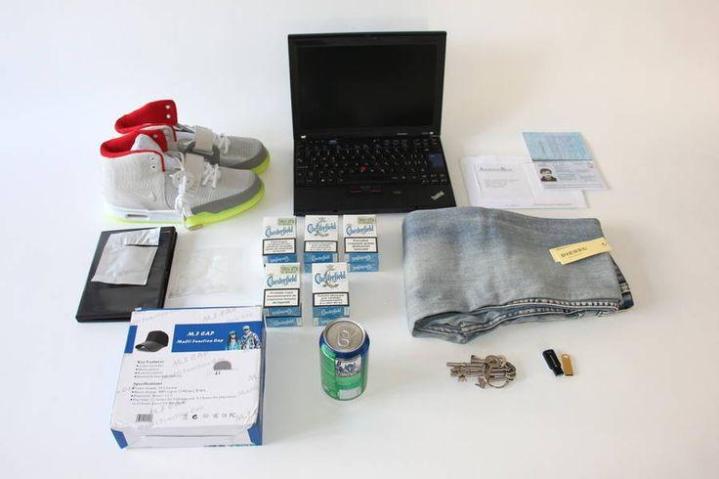
The bot was given a budget of $100 in Bitcoin every week and accumulated quite the collection of eclectic contraband for the artists exhibition. Among its loot were a Hungarian Passport, fake Diesel jeans, ecstasy pills, and a creepy baseball cap with a built in hidden camera. All the items were then automatically delivered to the Swiss art gallery Kunst Halle St Gallen. They were were intended to become part of the artists exhibition.
As a side note, the robot, who came to be known as “Random Darknet Shopper,” did have some taste. It also purchased the The Lord of The Rings ebook collection.
Obviously, this artistic endeavor was not looked on so favorably by authorities, who promptly arrested the robot and confiscated all illegal purchases it had made. But don’t be disheartened, art lovers! Remember, this is Switzerland and not a lesser artistic and enlightened country. Three months later, Swedish authorities returned the robot to the artists along with all the purchases it had made, except for the ecstasy tablets, which were “destroyed.”
“This is a great day for the ‘bot, for us and for freedom of art!” !Mediengruppe Bitnik said in a blog post.
Thomas Hansjakob, a spokesperson for the Swiss St Gallen police said in a statement said, “We decided the ecstasy that is in this presentation was safe and nobody could take it away. Bitnik never intended to sell it or consume it so we didn’t punish them.”
We can only wonder how U.S. authorities would respond to a robot drug art exhibit.
Editors' Recommendations
- Boston Dynamics’ Spot robot to paint for an art exhibition
- They strapped a paintball gun onto a Spot robot. Now the internet has the reins
- Most art galleries are closed, but you can still tour this one — with a robot
- Vector the social robot has good news for its human buddies
- FarmWise has built a robotic weeding machine that cuts out the chemicals




